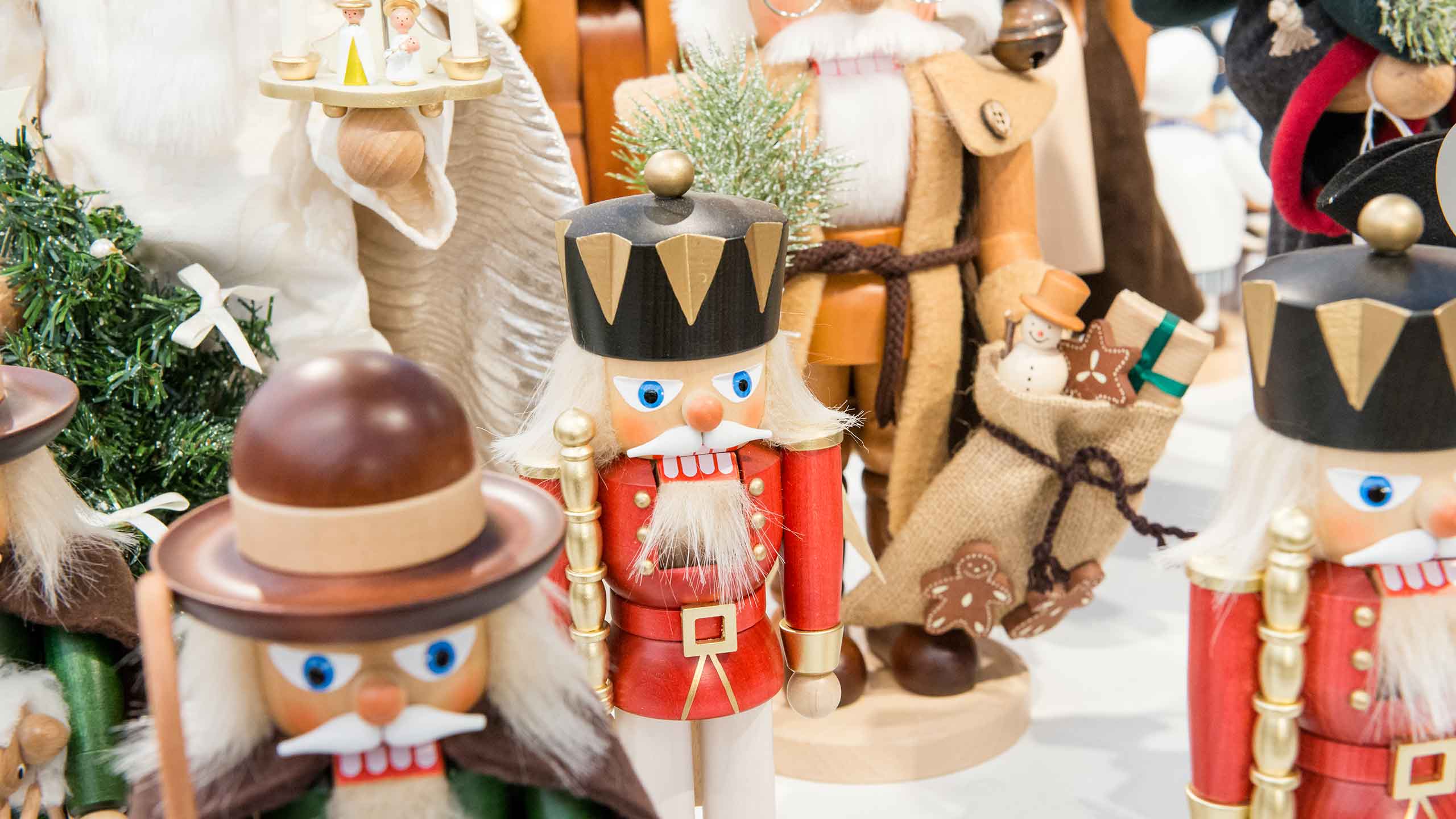
Some of our Christmas memories may be lengthy and full of detail – like recalling conversations with our grandparents or funny antics with the cousins. Other memories may be more like photographs or vivid images of single objects – little pieces of a scene – that come to represent the deeper feelings and traditions that we experienced during the holidays. Maybe we remember a special heirloom ornament on the tree, a handmade tablecloth that only comes out once a year, or a vintage serving tray that always held Grandma’s best treats. These objects may be just “things,” but over the years – and attached to our memories of time spent with loved ones – they become part of our family history too.

It’s in this spirit of connection between past and present that we’ve brought together three special groups of holiday collectibles that – like many family traditions – have a rich history and a story to share. All three groups – the nutcrackers, the incense smokers, and the Christmas pyramids – originated a long time ago in the legendary Erzgebirge mountain region of southeastern Germany. Centuries ago, after the Erzgebirge region’s productive mining industry dwindled, the miners there had to adapt and find other ways to make their living. Fortunately, the surrounding mountains were also covered in dense forests and many of the families were already accomplished woodworkers. What started as carving simple wooden tools and toys after a day of working in the mines became a successful new industry, producing wooden folk art known the world over for its quality and detail. These hand-carved objects often met a practical need – such as providing light or cracking a nut – but they also allowed their creators to honor the hard-working men and women who made up their community. And some items expressed their hope for safety and security in sometimes challenging circumstances. Generations have passed since that time, but the traditional woodworking skills and customs developed then continue to shape the exquisite handcrafted items that come from the Erzgebirge today. Your family may have pieces of this amazing folk art that have become family heirlooms or that you’ve brought home from travels to Germany yourself.
Thanks in large part to a famous ballet, many of us are familiar with the soldier-like nutcracker, standing at attention in his crisp uniform. According to German legend, nutcrackers possessed magical powers that could protect the family and ward off evil spirits. Dressed as soldiers and kings, their grim faces show their determination to protect the home from danger. Our nutcrackers are created by Christian Ulbricht, one of the fine companies producing exquisite handcrafted wooden collectibles in the storied Erzgebirge woodworking tradition. Founded in 1928 by Otto Ulbricht, the company remains rooted in the tradition of family bonds and the deep tie to the land that defines the Erzgebirge heritage. Although there are others who create nutcrackers, you can always tell an Ulbricht nutcracker by its distinctive knobby nose and precise craftsmanship.
Another popular folk-art tradition to originate in the Erzgebirge are the German incense smokers. Like the nutcrackers, these hand-carved folk-art characters weren’t just created for decoration. Burning incense had long been used in Germany to ward off malevolent spirits, and since 1948, KWO has used traditional woodturning techniques plus a bit of whimsical humor to produce their incense smokers. Each smoker is designed in two pieces that separate so the incense cone can be placed inside. Put back together, the incense smoke emerges from their funny little mouths as if the figure were puffing on a pipe. These charming folk characters may be engaged in serious pursuits like baking, gardening, and peddling toys, but their sweet expressions bring smiles to collectors’ faces all over the world.
Christmas pyramids are intricately carved decorative pieces that slowly turn with the rising heat of gently burning candles. These pyramids have roots deep in the heart of the Erzgebirge culture. Long ago, miners in the region would tie together several wooden sticks and decorate these structures with candles to be used as a comforting source of light in the dark mines. They called these creations Lichtergestelle, or light stands, and many believe they are the original inspiration for today’s decorative pyramids and even the Christmas tree. Over the centuries, Christmas pyramids became more elaborate as woodcarvers expanded on their designs and added decorative features like intricately carved people, trees, and animals. These scenes, slowly turning with the movement of the pyramid, often depict the story of the nativity, Santa’s arrival, or just everyday life in the villages where they were originally created. Today you can find Christmas pyramids in a variety of sizes and styles, from tabletop decorative pieces like the ones we have, to huge displays several stories tall in the middle of town squares in Germany. Our pyramids are made by the Richard Glässer company, also from the Erzgebirge region.
As kids, our wide eyes took in all the wonderful images that made up Christmas with our loved ones. At the same time, we absorbed the comforting feelings of tradition, security, and love that were there too – creating lasting memories that stay connected with these special objects as they pass from generation to generation. In our German holiday collectibles, we hope you’ll find a piece that reminds you of something special in your own Christmases past and creates a cherished memory for your loved ones to treasure too.


